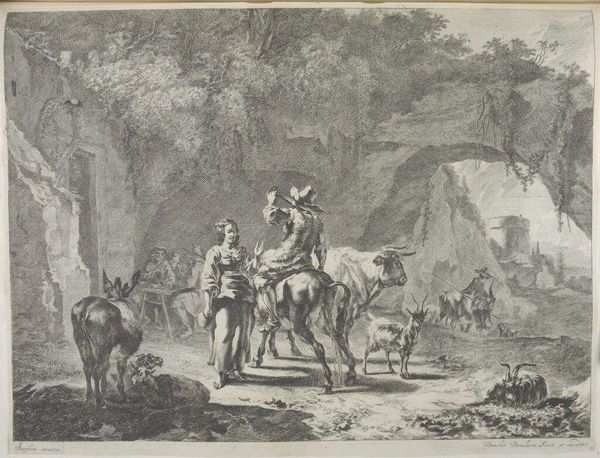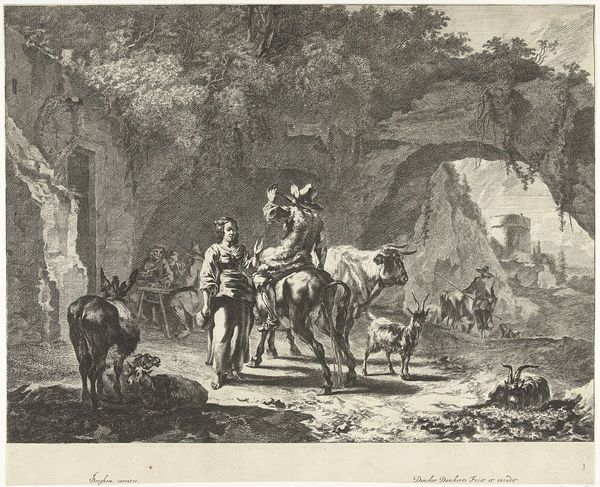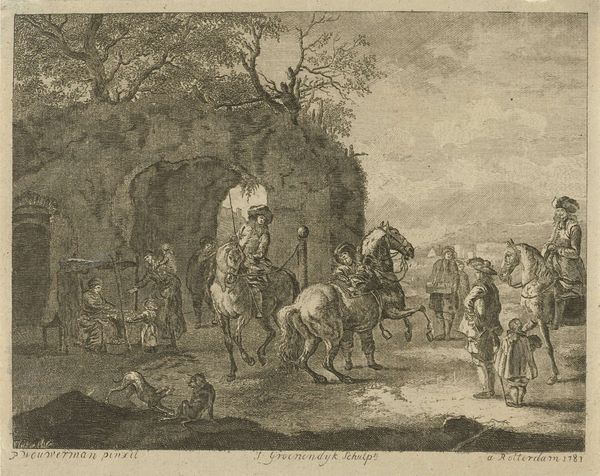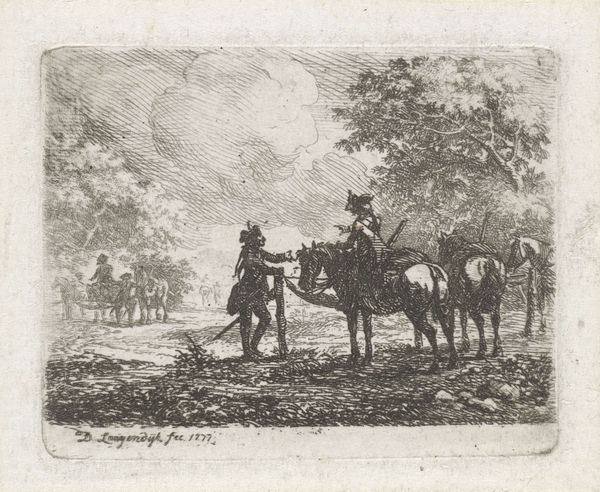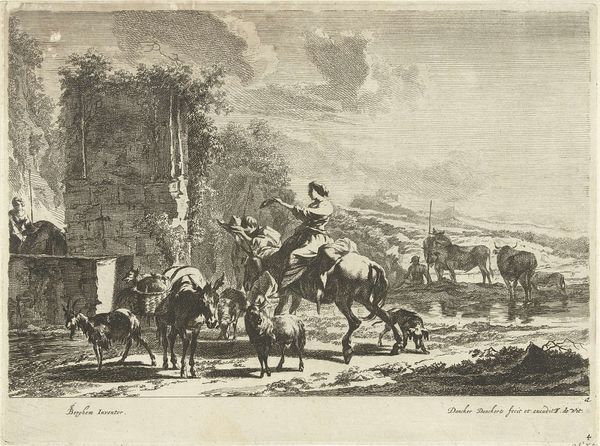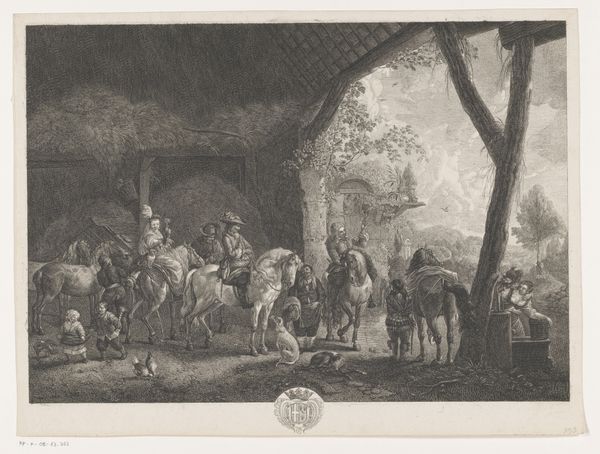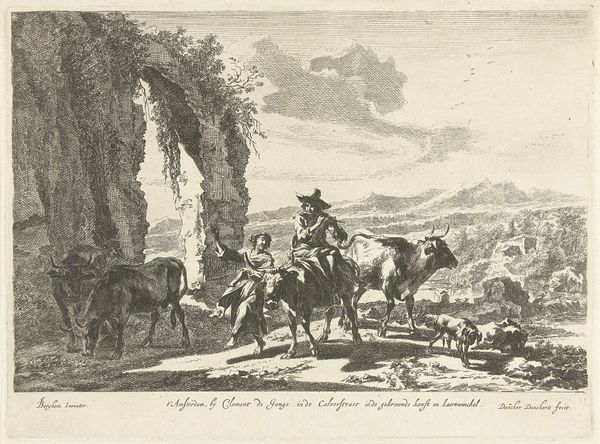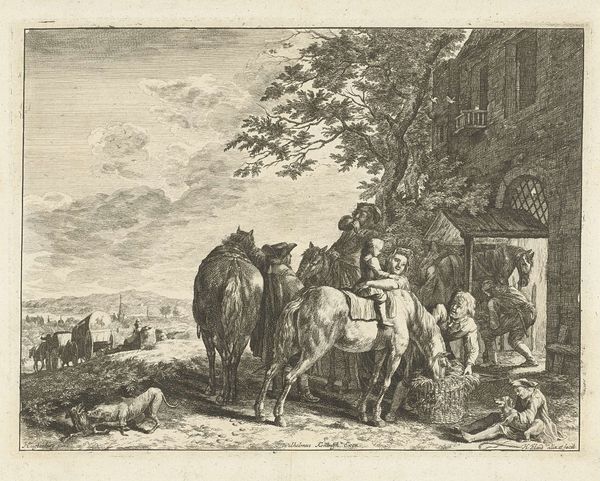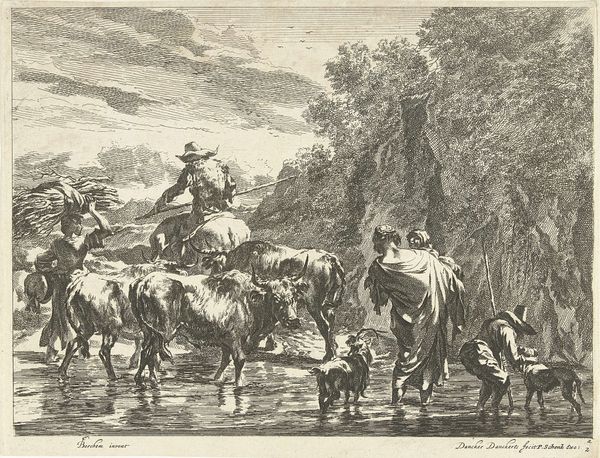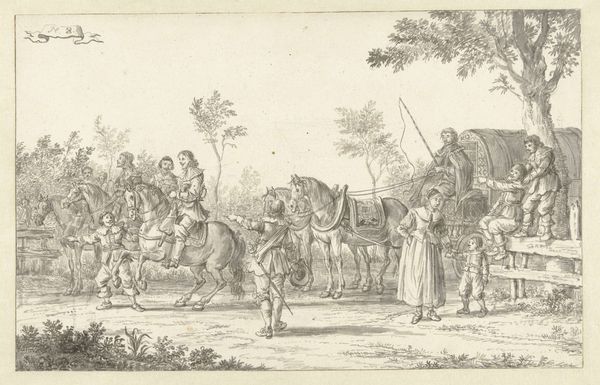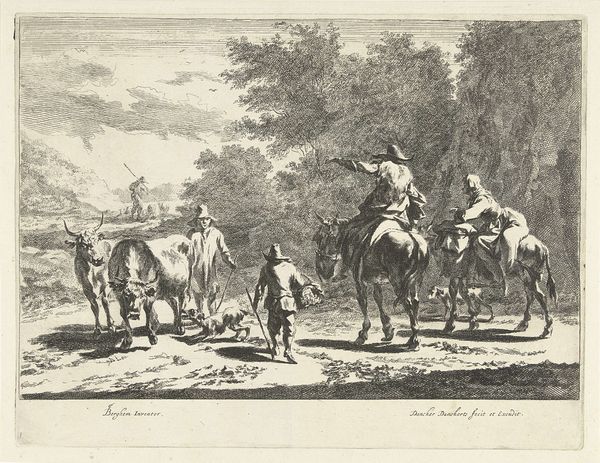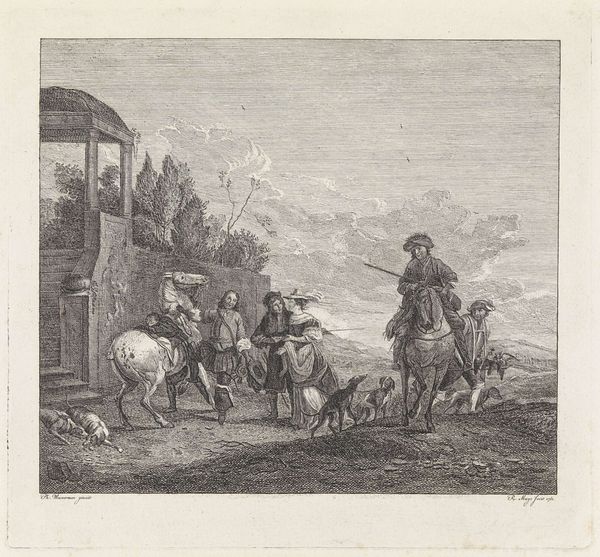
print, engraving
#
16_19th-century
# print
#
old engraving style
#
landscape
#
romanticism
#
19th century
#
genre-painting
#
academic-art
#
engraving
Dimensions: height 295 mm, width 390 mm
Copyright: Rijks Museum: Open Domain
Editor: Here we have Gijsbertus Craeyvanger’s 1833 engraving, "Stalinterieur met aankomst van een jachtgezelschap," or "Stable Interior with the Arrival of a Hunting Party". It has a very theatrical quality to it, almost like a stage set. What historical contexts might have influenced Craeyvanger’s work? Curator: Well, consider the date, 1833. This is post-French Revolution, post-Napoleonic era. Romanticism is in full swing, a movement steeped in nostalgia for pre-industrial life, for the aristocracy. What do you notice about the figures? Editor: They seem to be of a higher social class, the way they’re dressed, their leisurely activity. Curator: Exactly! Craeyvanger romanticizes the aristocracy and their supposed relationship with the land, even as that very structure was under threat. We’re not just seeing a hunting party; we are seeing a projection of power and privilege at a time of significant social upheaval. How does this romanticized image play into broader narratives of class and power at the time? Editor: I see what you mean. It is less an objective representation and more a carefully constructed…narrative. The “genre-painting” becomes a potent assertion of a particular social order, consciously or unconsciously. Curator: Precisely! The artwork becomes a stage on which anxieties and desires about social mobility are played out, even fetishized. And what appears initially as simple genre scene opens up into something far more complex. Are we still implicated by that narrative? Editor: Definitely food for thought. I’ll never see this artwork the same way again.
Comments
No comments
Be the first to comment and join the conversation on the ultimate creative platform.
